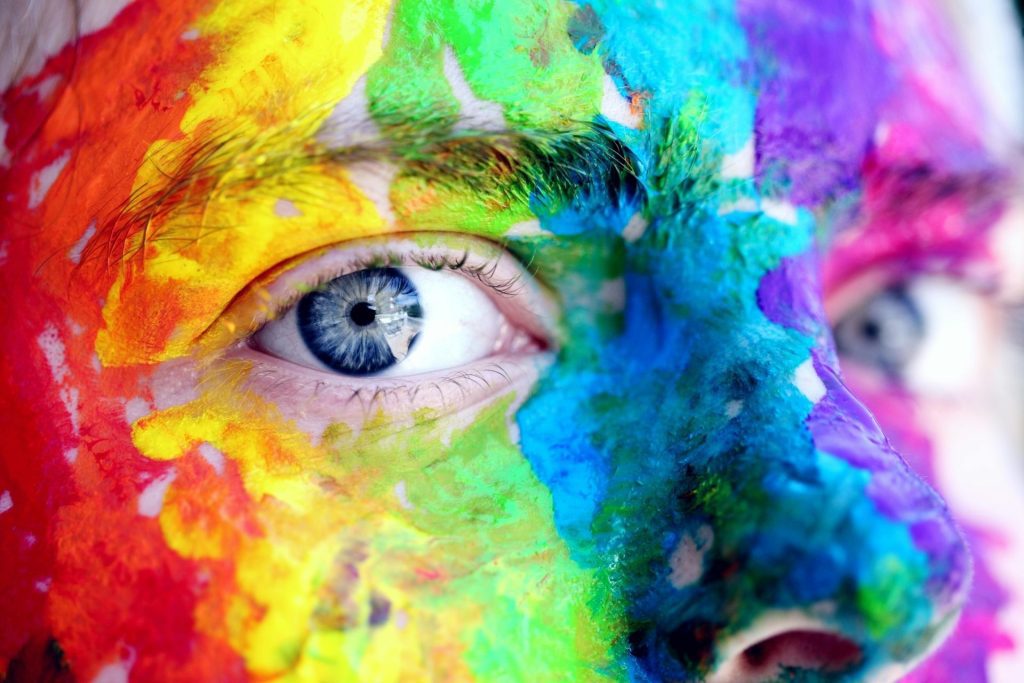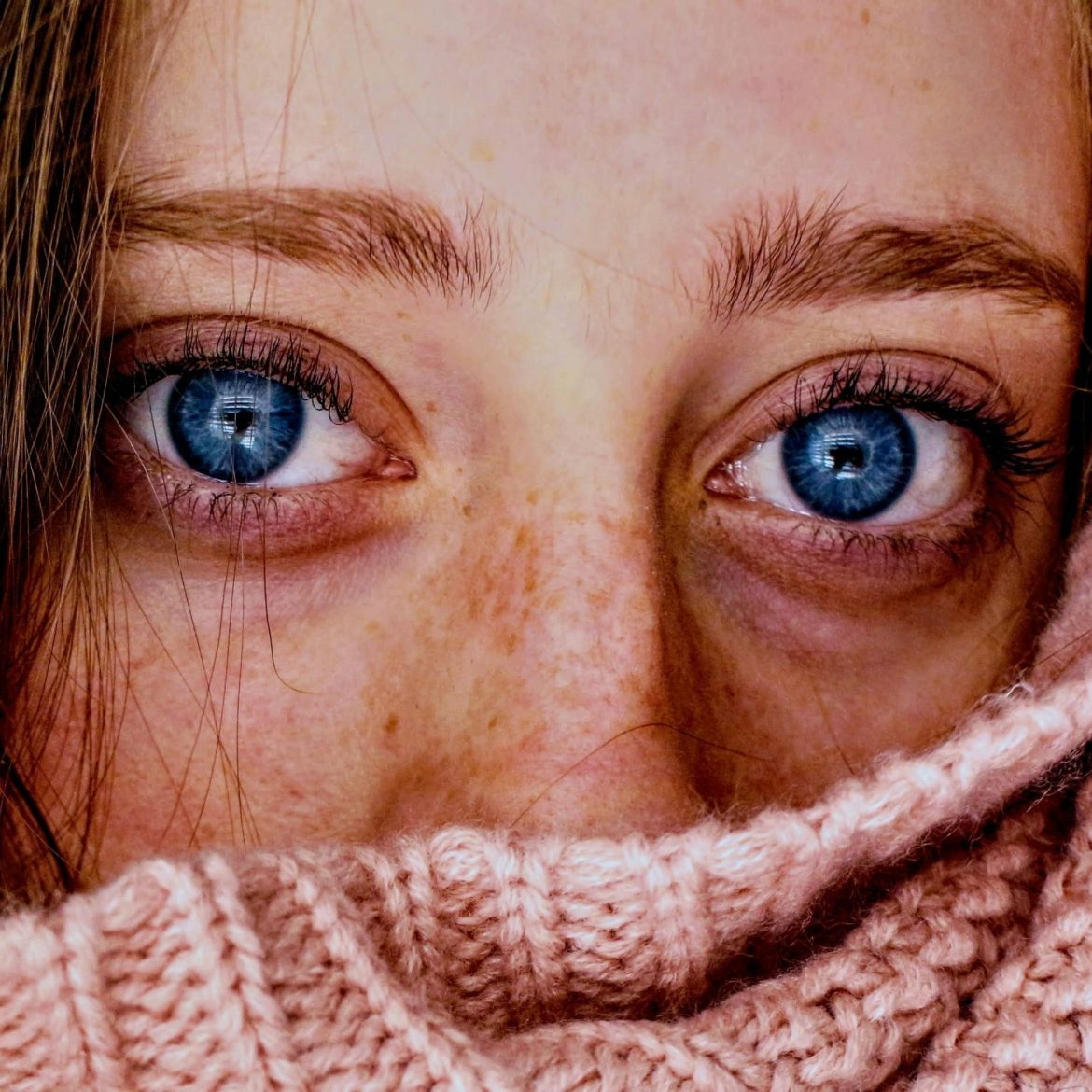![]()
From Elizabeth Taylor and Paul Newman to Margot Robbie and Chris Hemsworth, there’s no denying the intense power of blue eyes. One look, and you just want to disappear into them.
Blue-eyed beings might as well be vampires, unnatural in their beauty and masterful in their seduction.
But wait … Are blue eyes more sensitive to light? Like vampires?!
Before you threaten your blue-eyed friends with a wooden stake, let’s dive deep into blue-eyed fiction and facts and get to the bottom of this.
Why Are Blue Eyes Blue?
Blue eyes get their color from an absence of melanin, the same melanin that gives your skin its color. The more melanin you have, the darker your skin is. The more melanin you have, the browner your eyes are.
When eyes lack melanin, light hits this color void and reflects back as blue. This is the same light scattering effect that makes the sky look blue. So, in other words, blue eyes aren’t actually blue, but the absence of melanin makes them look blue!
Blue eyes are mutations determined by a single gene, reducing melanin production in the iris. This physiological condition is relatively new compared to the genetic histories of other eye colors.
The different shades of blue in blue eyes are from having different melanin concentrations. When light scatters within the iris, it reflects back a spectrum of blue, from light blue (like Paul Newman’s eyes) to darker bluish-violet hues (like Elizabeth Taylor’s eyes).
Are Blue Eyes More Sensitive to Light?

The claim that blue-eyed beings are vampires … er, are highly sensitive to light … is a persistent one. The facts of the matter are a bit more complicated.
Some individuals with blue eyes might experience a higher sensitivity to light. But other factors come into play.
- Melanin Level in the Iris: Even if your eyes are blue, you still have some melanin in your iris, but the amount is significantly lower than that of brown-eyed people. Higher melanin levels provide greater protection from intense light.
Each blue-eyed person experiences light differently, depending on melanin concentration. If your blue eyes are of a lighter shade of blue, you likely have lower melanin levels and might be more sensitive to light than darker blue-eyed individuals. - Pupil Size: Pupils allow light into your eyes; the larger your pupils, the more light can enter. People with larger pupils may experience more light sensitivity. Some blue-eyed individuals have larger pupils, perpetuating the myth that blue eyes are more light-sensitive.
- Lens Clarity: Age is also a factor in light sensitivity. As we get older, the eye’s lens becomes less transparent and more sensitive to light. So, in these cases, it’s not the blue eyes, it’s the aging factor.
- Underlying Medical Conditions: Certain conditions can affect a person’s light sensitivity, regardless of eye color. Photophobia, for instance, is a person’s extreme sensitivity to light. Other conditions include migraines, keratitis (inflammation of the cornea), and iritis (inflammation of the iris).
So, yes, those with blue eyes might experience light sensitivity, but it’s not a direct consequence of their eye color.
Geolocation and the Evolution of Blue Eyes

Blue eyes are more prevalent in Northern and Eastern Europe. You can actually plot their global distribution against historical migrations across the continents. This has led to theories about the evolutionary advantage of those with blue eyes.
Some claim that blue-eyed people have a selective advantage in environments with less light, such as those in the higher latitudes of the Northern Hemisphere.
These theories, however, are still being debated, given other factors that affect the higher concentration of blue-eyed beauties.
Blue Eyes and Health
There are no proven links between blue eyes and health, but studies have pointed to possible correlations between blue eyes and specific health conditions.
For instance, one small study cited a potentially greater risk of developing ocular uveal melanoma, a rare form of eye cancer.
Another prospective study suggested that men with light eye colors might be more prone to basal and squamous cell carcinoma.
Even then, it’s important to note that these studies are preliminary, and much more research is needed. On the upside, another study claims that blue eyes are at a lower risk of developing cataracts than brown eyes.
An Ode to Blue
Demystifying blue eyes, even a little, lets us know beautiful blue-eyed creatures aren’t vampires. They just have less melanin! Some might be sensitive to light, but they’re human, just like the rest of us.
As the Carpenters’ song goes: “The angels got together and decided to create a dream come true. So, they sprinkled moon dust in your hair of gold and star light in your eyes of blue.”
No matter how much you resist, your blue-eyed friends will continue to enthrall you. Let them. They can’t help themselves; it’s in their genes.


